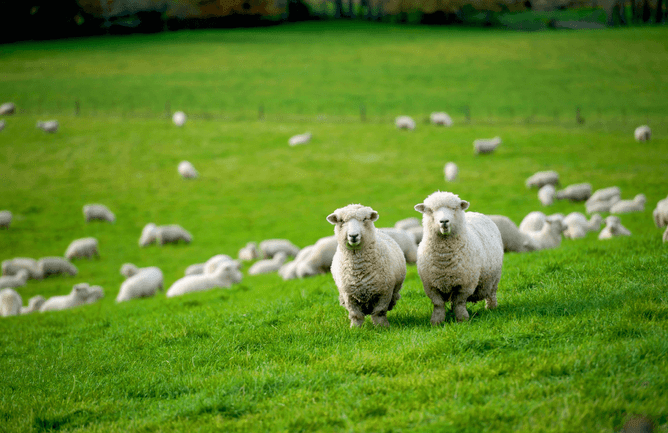There are a lot of different clostridial vaccines available. When choosing which clostridial vaccine to use on your ewes or lambs there are a number of factors you need to consider:
What other diseases do you need to prevent?
For many sheep breeding operations just using the standard 5in1 clostridial vaccines (Ultravac®5in1) is often all that is required, but consideration should also be given to some of the other diseases you might experience on the farm and the ability to prevent these without adding any more work. Table 1 outlines alternative options:
Different clostridial vaccine options and the reasons why you might use them.
| Disease | Vaccine Option | Reason for use |
| Sudden death syndrome | Ultravac SD 6in1 | Grazing high-quality rapid growing pasture, clover mixes or crops. |
| Leptospirosis | Ultravac 7in1 | Survey data shows that 97% of sheep and beef farms have exposure to Leptospirosis1. |
| Cheesy gland | Ultravac 5+1 | 5-7% of cull ewes carcasses in NZ are subject to trimming or condemnation due to Cheesy glands2. |
| Gastrointestinal parasites | Eweguard | Where ewes are subject to significant parasite challenges. |
Is trace element supplementation required?
On properties where selenium or Vitamin B12 deficiencies occur supplementation can be given in combination with clostridial vaccination.
Different clostridial vaccine options and mineral supplementation.
| Mineral Supplementations | Vaccines | Target Animal |
| Selenium | Ultravac 5in1 with selenium | Ewes |
| Eweguard plus selenium | Ewes | |
| Vitamin B12 | Ultravac 5+1 B12 | Ewes and lambs |
| Selenium and Vitamin B12 | Ultravac 5+1 Se B12 | Ewes and lambs |
| Eweguard plus Se B12 | Ewes |
Irrespective of which vaccine you choose to use, ewes should be vaccinated 2-4 weeks pre-lamb with their annual booster, to ensure high levels of antibodies are passed onto the lambs via the colostrum. In order to prevent as many deaths as possible, it is important that we start vaccinating the lambs as soon as possible. Therefore, vaccination should begin at docking and the booster vaccination given at pre-weaning (4-6 weeks later) or at weaning.
Recent trial work looking at starting vaccination at docking with Ultravac® 5in1 has shown that 23% of the total lamb loss that occurs from docking to pre-lambing as a hogget, is caused by clostridial disease. It also showed that the periods of highest lamb loss occur after docking and weaning 3. It is therefore essential that lambs complete their two-shot vaccination program as quickly as possible in order to minimise the losses from clostridial disease. Economic calculations estimate the return on investment for lamb vaccination to be at least 3.5 times the cost of vaccination.
Where lambs or ewes are to be grazed on a crop, they should have received a booster vaccination within 3 months before being introduced to the crop. This ensures a high level of protection which matches the higher level of risk posed by the crop.
For further information on a clostridial vaccination program or on which vaccine would best fit your farming system contact one of our vets.
References:
1)Heuer etal. (2012) Leptospirosis in New Zealand – Best Practice Recommendations for the use of vaccines to prevent human exposure. Institute of Veterinary, Animal and Biomedical Sciences, Massey University.
2)Nuttall, W. 1988 caseous lymphadenitis in sheep and goats in NZ. Surveillance 15 (1) 10-12. Plus recent 2017 data from Asure quality.
3) Bingham, C. M. & Hodge, A. (2022) Lamb mortality and clostridial disease. New Zealand Veterinary Journal 70 (1) 49-54. Zoetis New Zealand Limited. ULTRAVAC and Eweguard are registered trademarks of Zoetis NZ Ltd. ACVM Registration No’s A3585, A6926, A11607 and A11606, A7302, A9659, A9122, A6935 & A10191

